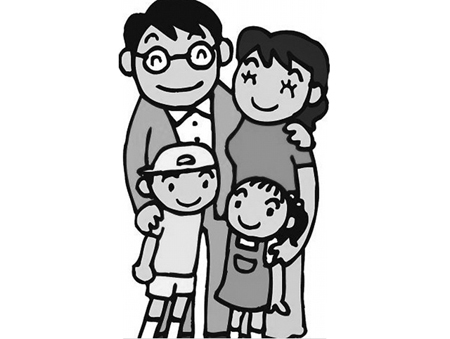Wufeng: pilot county encourages procreation
Liu Qing, who lives in Wufeng County in central China's Hubei Province, sipped green tea at his factory, leisurely enjoying the tranquil afternoon. Liu first became a grandfather in 2005. Two years later, Liu enjoyed something that many Chinese have been refused – a second grandchild.
Because he is a resident of Wufeng, Liu has the privilege of seeing two grandchildren grow up. That's because a second-child policy has been in practice for nine years in the county's towns, while villagers in Wufeng have benefited from it for up to 25 years.
At first the county implemented the one-child policy, but in January of 1986 it became a Tujia "autonomous" county and began applying a more liberal childbirth policy for ethnic minorities. However, people other than the Tujia could all enjoy the policy.
Between 1985 and 1987, many people were afraid that the policy might be abolished at any time, which resulted in a baby boom across the county.
Later, as expected, the policy was finally adjusted, and in 1988 it was regulated that couples who were both registered with non-agricultural hukous, or permanent residence permits, could only have one child.
In 2004, a third-child policy was approved and introduced in Wufeng County. For a remarried family, if one member of the couple lost their ex-spouse and lived with two children, but the couple had never had a child before, they were allowed to have a third child together.
As the family planning policy has been gradually adjusted in Wufeng, many traditional ideas of family and childbirth have also changed. People do not prefer boys to girls, for example, and they no longer consider the continuity of a clan (which requires male heirs) a must. With time, the population structure has become optimized, people do not have unscheduled births and the local population has become under control naturally.
Insights from pilot area
The case of Wufeng County may offer some insight into possible adjustments to the current family planning policy. According to experience, the population aging trend is not reversible, and the aging process is inevitable with the decline in birth rate. If China begins to allow second children, the birth rate may see a rise at first and the aging process may be mitigated to a limited degree – which would be better than nothing, of course.
Judging from the effects of the family planning adjustments in Wufeng County, allowing a second child can optimize population structure and alleviate aging pressure over the long term, but it will also mean a bigger population in the short term. This is where the contradiction lies.
According to Wang Guangzhou, at this time it must be determined which is more important for society. If China allows second children, the population will not exceed 1.5 billion in a short time, but if the one-child policy is continued, the aging process will be three times as fast by 2050.


















